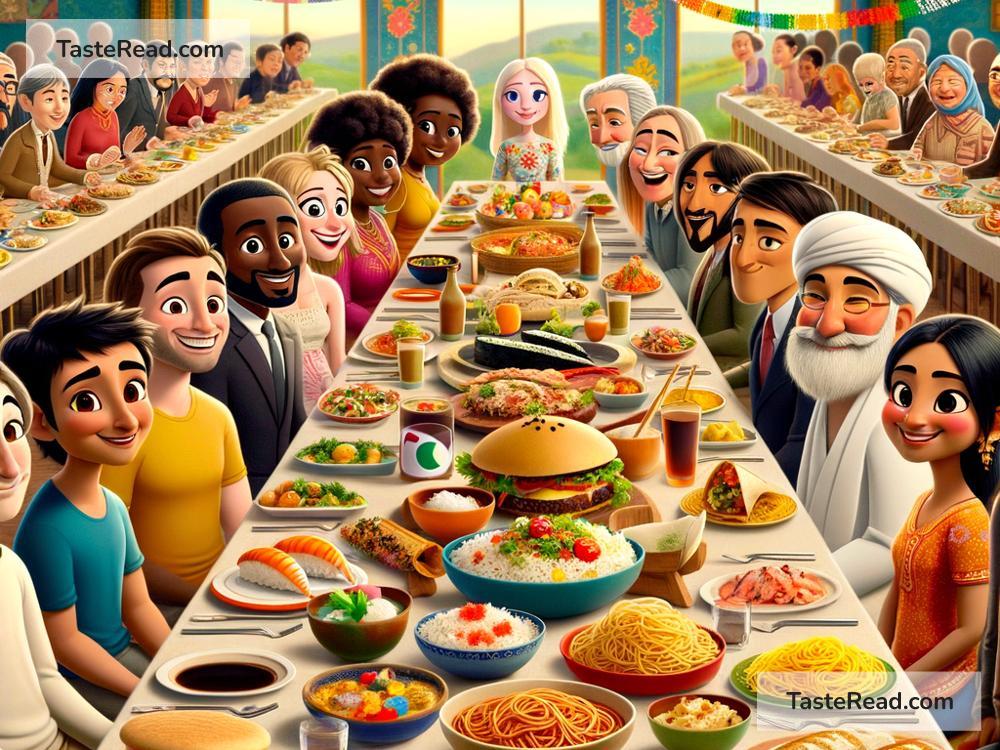The Cultural Impact of Food in Animated Films
Animated films have a magical way of bringing stories to life, sparking our imaginations, and creating unforgettable moments. But one thing that often stands out in these movies is how food is used to connect characters, cultures, and emotions. Across the globe, filmmakers carefully use food to tell stories, celebrate diversity, and engage audiences in something that we all relate to—eating! In this blog, we’ll explore how food in animated films impacts culture and why it matters.
Food as a Symbol of Culture
In many animated movies, food speaks louder than words when it comes to showcasing cultural traditions. By featuring dishes specific to a region or community, filmmakers introduce audiences to the beauty of different cultures. For example, in Disney’s Ratatouille, the central dish “ratatouille” isn’t just an ordinary vegetable recipe. It represents French cuisine and the heartwarming idea that even the simplest dishes can evoke deep emotions. The scene where Anton Ego, the food critic, tastes ratatouille and recalls his childhood creates a powerful connection between food, memory, and culture.
Similarly, Pixar’s Coco celebrates Mexican culture through vibrant visuals and food like tamales, pan de muerto (a sweet sugar-dusted bread served during Día de los Muertos), and other traditional dishes. The colorful feasts reflect the rich heritage of Mexico and remind audiences that food is an essential part of how cultures celebrate life, honor loved ones, and preserve traditions.
Animated films use food to represent identity, reminding us that every dish tells a story about where it comes from and the people who make it. It’s like taking a tasty trip to different parts of the world, all from the comfort of your couch!
Food as a Connection
Food is often portrayed as a bridge that brings characters together in animated films. Whether it’s cooking, sharing a meal, or learning about someone’s favorite dish, food creates connections full of warmth and understanding. In Studio Ghibli’s Spirited Away, one of the most memorable scenes involves Chihiro’s parents eating piles of food at a mysterious feast. Later, Chihiro learns about empathy and hard work by serving traditional Japanese dishes in the spirit realm. Food in this film ties human emotions to rituals, reminding us of its power to unite people, even in surreal worlds.
Another example is DreamWorks’ Kung Fu Panda, where food is tied to humor and philosophical lessons. Po, the lovable panda, loves dumplings, and his journey to become the Dragon Warrior includes training scenes where dumplings symbolize his determination. At first, Po’s love for food represents his carefree nature, but as the story unfolds, it shows how he learns discipline and self-control—all through food! These moments remind us how food is not just sustenance but something that shapes relationships and personal growth.
Food as an Emotional Trigger
Food in animated films often serves as an emotional trigger that deepens the audience’s connection to characters’ feelings. Eating or cooking can be tied to joy, nostalgia, comfort, or even sadness. In Ratatouille, the rat chef Remy’s dream of preparing exquisite dishes is—unbelievably—relatable. People everywhere understand what it’s like to pour their heart into something they care deeply about. When Remy succeeds in wowing human characters with his cooking, you can feel his pride and determination, all tied to food.
Another movie that uses food to evoke emotion is Studio Ghibli’s My Neighbor Totoro. The simple act of eating lunch highlights family love and care. The sisters, Satsuki and Mei, sit under a giant tree and nibble on fresh vegetables and rice prepared by their family. These quiet moments feel nostalgic and comforting, reminding audiences of how food often anchors memories of home and loved ones.
On the other hand, some films use food to heighten tension or drama. In The Princess and the Frog, Tiana’s dream to open her restaurant reflects her resilience and passion for cooking. Whenever food is shown, it’s tied to her effort and strong work ethic, making us root for her success all the more. Food in such stories becomes an emotional centerpiece that reinforces the themes of ambition and hope.
Food as Art
If there’s one thing animated films excel at, it’s making food look amazing on screen! From the golden crusts of baked pies to steaming bowls of ramen, the visuals of food in animation are often breathtaking. Filmmakers use these images to create hunger-inducing moments while showcasing the artistry behind the dishes. Watching these films can spark curiosity about cooking new recipes or exploring new cuisines.
For example, in Cloudy with a Chance of Meatballs, food takes center stage as giant hamburgers, spaghetti, and pancakes rain down from the sky. While it’s whimsical and absurd, the movie captures how food can also be playful and fun. Similarly, in Ratatouille, attention to detail in food preparation elevates cooking into art, inspiring audiences to see creativity in the kitchen.
Why Food Matters in Animated Films
Food in animated films isn’t just something characters eat—it’s a powerful storytelling tool. It helps celebrate diversity, deepen emotional connections, and highlight the importance of culture. Whether it’s a steaming bowl of noodles, a loaf of bread, or a fancy culinary masterpiece, food is universal. Animated movies use it to remind us that, even in fantasy worlds, food creates bonds and tells stories that resonate with people all over the world.
The next time you watch an animated film with a memorable food scene, take a moment to appreciate what it represents. From family and tradition to dreams and emotions, food plays a starring role that enriches storytelling and brings people closer together—one bite at a time!


